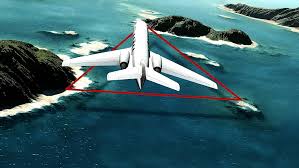When you look at a ship, the most prominent and visible part is its hull. The hull forms the body or shell of the vessel and is the most crucial structural component in shipbuilding. It is the watertight portion that provides buoyancy and allows the ship to float and move through water. Without a strong and well-designed hull, a ship cannot perform its intended functions safely or efficiently. This blog will delve into the anatomy, importance, types, construction materials, and technological advancements related to the hull of a ship.
What is the Hull of a Ship?
The hull is the main body of a ship or boat, including the bottom, sides, and deck but excluding the masts, superstructure, rigging, machinery, and equipment. It is the structure that sits in the water and supports the rest of the vessel. In simple terms, the hull is like the skeleton and skin of the ship combined.
The hull is designed to:
-
Provide buoyancy (the ability to float),
-
Ensure stability (resistance to capsizing),
-
Minimize resistance while moving through water,
-
Withstand the forces of waves, wind, and cargo weight.
A well-designed hull ensures safe navigation in various sea conditions, and its shape significantly impacts the ship’s speed, fuel efficiency, and maneuverability.
Parts of the Hull
A ship’s hull consists of several key parts:
-
Bow: The front part, often curved or pointed to reduce resistance.
-
Stern: The rear of the hull where the propulsion systems are usually located.
-
Keel: The backbone running along the bottom center of the hull from bow to stern.
-
Deck: The upper surface of the hull where crew and cargo are accommodated.
-
Bilge: The lowest part inside the hull where water may collect and is pumped out.
-
Plating and Framing: The external metal or wooden sheets (plating) and internal framework that provide shape and strength.
-
Freeboard: The vertical distance from the waterline to the upper deck.
Types of Hulls
There are different hull designs depending on the vessel’s purpose. Some of the common types include:
1. Displacement Hull
-
These hulls displace water equal to their weight and are typically found in large ships like tankers, cargo vessels, and cruise ships.
-
They are stable, energy-efficient for slow to medium speeds, and excellent for long-distance travel.
2. Planing Hull
-
These are flat-bottomed or V-shaped hulls that glide over the water at high speed.
-
Common in speedboats and patrol vessels.
-
Less stable in rough seas but good for quick maneuvers.
3. Semi-Displacement Hull
-
A hybrid design that combines features of displacement and planing hulls.
-
Offers a balance between speed and fuel efficiency.
4. Catamaran and Trimaran Hulls
-
Multi-hull configurations that use two (catamaran) or three (trimaran) hulls.
-
Offer excellent stability and reduced drag, used in ferries, naval ships, and racing yachts.
Materials Used in Hull Construction
Historically, hull of a ship were made from wood, especially in ancient and medieval times. With industrialization, the materials evolved:
-
Wood: Used in small boats and traditional ships.
-
Steel: Dominant material for commercial ships due to its strength and durability.
-
Aluminum: Lightweight and corrosion-resistant; used in high-speed vessels and yachts.
-
Fiberglass: Common in recreational boats; easy to mold and maintain.
-
Composite Materials: Modern, high-performance ships may use carbon fiber or other composites for enhanced strength-to-weight ratios.
The choice of material depends on the ship’s purpose, required strength, cost, and weight considerations.
Hull Design and Hydrodynamics
Hull design is a highly specialized area involving naval architecture and hydrodynamics. The shape and curvature of the hull determine:
-
Drag (resistance) while moving through water,
-
Speed and fuel consumption,
-
Seakeeping ability (how well the ship handles waves),
-
Maneuverability in various maritime conditions.
Modern software and tank testing are used to simulate and optimize hull designs before full-scale construction. Even minor improvements in hull design can lead to significant fuel savings over the vessel’s lifetime.
Hull Coatings and Maintenance
A ship’s hull must endure constant exposure to saltwater, marine organisms, and harsh environmental conditions. To protect it, special coatings are applied:
-
Anti-fouling Paint: Prevents growth of barnacles and algae.
-
Corrosion-Resistant Coatings: Protect metal surfaces from rust and degradation.
-
Hull Cleaning and Inspections: Periodically, ships undergo dry-docking where the hull is inspected, cleaned, and repainted to maintain performance and safety.
Innovations in Hull Technology
In recent decades, several innovations have emerged in hull design and materials:
-
Bulbous Bow: A protruding bulb below the waterline at the front of the ship, which reduces drag and improves fuel efficiency.
-
Air Lubrication Systems: Create a layer of air bubbles under the hull to reduce friction.
-
Bio-inspired Hulls: Mimic textures from marine animals like sharks to reduce drag.
-
Smart Hull Monitoring: Sensors embedded in the hull to detect stress, corrosion, or impacts in real time.
These advancements contribute to greener and more economical maritime transport.
Conclusion
The hull is undoubtedly the backbone of a ship, defining its ability to float, move, and survive the forces of nature. From ancient wooden designs to today’s sleek, sensor-equipped steel giants, the evolution of the hull reflects the progress of maritime engineering and human ingenuity.
Whether it’s a cargo ship crossing the oceans, a naval destroyer on patrol, or a luxury cruise liner sailing into the sunset, every vessel owes its journey to the strength and design of its hull. As we move toward a future of sustainable and automated shipping, the hull will remain at the center of innovation — adapting, evolving, and enabling humanity’s eternal connection with the seas.
